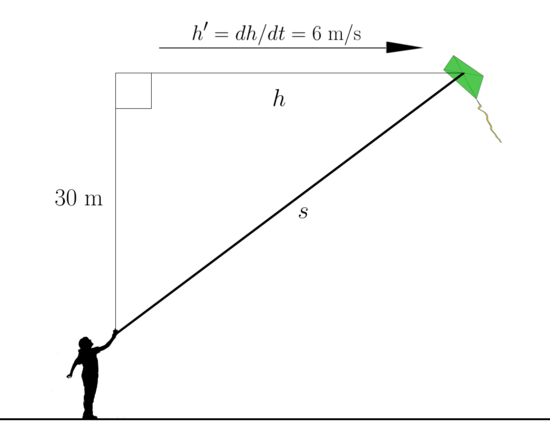Difference between revisions of "009A Sample Final 1, Problem 5"
Jump to navigation
Jump to search
| (2 intermediate revisions by the same user not shown) | |||
| Line 6: | Line 6: | ||
!Foundations: | !Foundations: | ||
|- | |- | ||
| − | | | + | |'''The Pythagorean Theorem''' |
|- | |- | ||
| − | | | + | | For a right triangle with side lengths <math style="vertical-align: -4px">a,b,c</math> where <math style="vertical-align: 0px">c</math> is the length of the |
|- | |- | ||
| | | | ||
| − | + | hypotenuse, we have <math style="vertical-align: -2px">a^2+b^2=c^2.</math> | |
|} | |} | ||
| + | |||
'''Solution:''' | '''Solution:''' | ||
| Line 21: | Line 22: | ||
|[[File:9AF_5_GP.png|center|550px]] | |[[File:9AF_5_GP.png|center|550px]] | ||
|- | |- | ||
| − | |From the diagram, we have <math style="vertical-align: -3px">30^2+h^2=s^2</math> by the Pythagorean Theorem. | + | |From the diagram, we have <math style="vertical-align: -3px">30^2+h^2=s^2</math> by the Pythagorean Theorem. |
|- | |- | ||
|Taking derivatives, we get | |Taking derivatives, we get | ||
|- | |- | ||
| | | | ||
| − | + | <math>2hh'=2ss'.</math> | |
|} | |} | ||
| Line 32: | Line 33: | ||
!Step 2: | !Step 2: | ||
|- | |- | ||
| − | |If& | + | |If <math style="vertical-align: -4px">s=50,</math> then |
|- | |- | ||
| − | | | + | | <math style="vertical-align: -2px">h=\sqrt{50^2-30^2}=40.</math> |
|- | |- | ||
| − | |Solving for& | + | |So, we have |
| + | |- | ||
| + | | <math style="vertical-align: -5px">2(40)6=2(50)s'.</math> | ||
| + | |- | ||
| + | |Solving for <math style="vertical-align: -5px">s',</math> we get <math style="vertical-align: -14px">s'=\frac{24}{5} \text{ m/s.}</math> | ||
|} | |} | ||
| + | |||
{| class="mw-collapsible mw-collapsed" style = "text-align:left;" | {| class="mw-collapsible mw-collapsed" style = "text-align:left;" | ||
!Final Answer: | !Final Answer: | ||
|- | |- | ||
| − | | | + | | <math style="vertical-align: -14px">s'=\frac{24}{5} \text{ m/s}</math> |
| − | |||
|} | |} | ||
[[009A_Sample_Final_1|'''<u>Return to Sample Exam</u>''']] | [[009A_Sample_Final_1|'''<u>Return to Sample Exam</u>''']] | ||
Latest revision as of 08:12, 10 April 2017
A kite 30 (meters) above the ground moves horizontally at a speed of 6 (m/s). At what rate is the length of the string increasing
when 50 (meters) of the string has been let out?
| Foundations: |
|---|
| The Pythagorean Theorem |
| For a right triangle with side lengths where is the length of the |
|
hypotenuse, we have |
Solution:
| Step 1: |
|---|
| From the diagram, we have by the Pythagorean Theorem. |
| Taking derivatives, we get |
|
|
| Step 2: |
|---|
| If then |
| So, we have |
| Solving for we get |
| Final Answer: |
|---|











